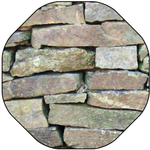- Home
- InDesign
- Discussions
- Replying on Downsampling before outputting, or man...
- Replying on Downsampling before outputting, or man...
Copy link to clipboard
Copied
Hello,
This is my first time posting on the Adobe Help Community, I hope I'm doing it right!
I have a question about downsampling in Indesign when exporting a document into a PDF.
I'm rushing to finish an architectural portfolio, which is about 10-12 pages long and has a mix of vectors, jpegs, pngs, etc. They all vary in size and dimensions, some are as big as 25MB and others are less than 1MB.
Is it recommended to downsize larger files before putting them into the Indesign document (for example I expect the portfolio would be viewed on a standard 15" screen, so I definitely don't need too high a resolution on most of the files I've inserted) or can I put them all in in their original format, and just rely on downsampling everything at the end when I export it from Indesign?
I'm curious about what the best practice is, since I'm a uni student and have had only a year and a half's experience with Adobe CC apps so far..
Thank you in advance for the help!
 1 Correct answer
1 Correct answer
It's hard to recommend a best practice without seeing the files, but in general you will want to find a good compromise between size and quality. If you have CAD drawings, keep them vector and remove any unnecessary layers to keep the size small, save a copy of the drawings first, just for the purpose of placing into your InDesign file (You can usually use Illustrator to edit the dwg files, if that's the original format, then save as a vector PDF), the viewer will be able to zoom in on the drawi
...Copy link to clipboard
Copied
I don’t think there would be any benefit in downsampling before you place, but it wouldn’t be difficult to run some comparison tests.
Copy link to clipboard
Copied
It's hard to recommend a best practice without seeing the files, but in general you will want to find a good compromise between size and quality. If you have CAD drawings, keep them vector and remove any unnecessary layers to keep the size small, save a copy of the drawings first, just for the purpose of placing into your InDesign file (You can usually use Illustrator to edit the dwg files, if that's the original format, then save as a vector PDF), the viewer will be able to zoom in on the drawing and see it in perfect sharpness. If you are starting with nice high res images, keep them RGB and do not downsample before placing into InDesign or upon export to PDF. If the PDF is too large, use Acrobat to optimize it* (downsample and compress the images) only as much as is necessary for size. You could also produce a low res PDF that includes a link to a high res PDF.
*the Acrobat optimize settings- Clean up and Discard Objects and Discard User Data can often help to reduce the size of your PDF.
Get ready! An upgraded Adobe Community experience is coming in January.
Learn more
